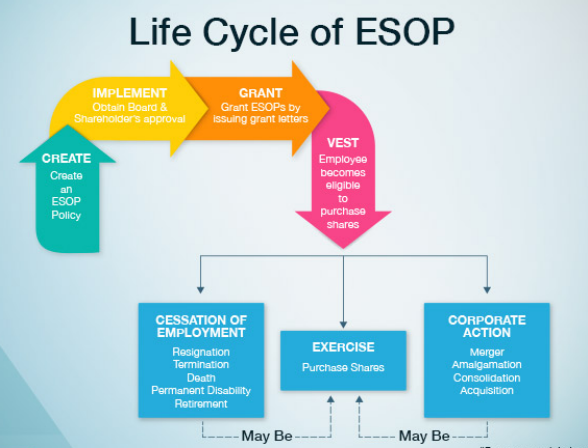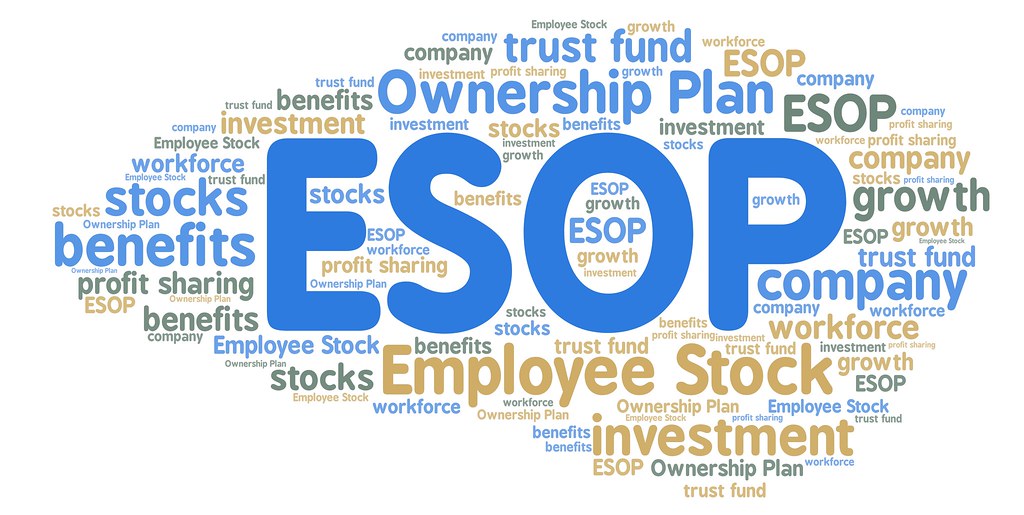ESOP is a benefit plan that allows employees in the company to own stock. Although It’s an employee benefit plan, it is somewhat different from other employee benefit plans.
Some of its main features are:
Firstly, Borrowing ability like ESOP is unique among qualified employee benefit plans.
And secondly, the other Purpose only’s a requirement by law to invest primarily in the employer’s securities.
For instance, Suppose you are the owner (small or big) of any company or a senior employee. Then you must know about it because it benefits both the employee and the company. So, To get complete information about it, You can continue to read this post.
WHAT’S IN IT
What is the ESOP (Employee Stock Ownership Plan)?
Basically, It’s a type of ‘Employee benefit plan’ that resembles some rules of the profit-sharing scheme. Its full name is ‘Employee Stock Ownership Plan.’ So, ESOP provides employees of the company with some part of the company, which we commonly call shares.

Due to the share of the company, employees work with full honesty.
How ESOPs Work?
Through ESOP, Employees can buy stock directly or obtain shares. Through a profit-sharing scheme. Or you can get a stock option, or take it as a bonus.
Contributes new shares of its stock or nearby to purchase existing shares. Now it can lend money to buy new or existing shares.
So, to make the company strong and big, hence to enable the company to repay the loan, apart from the employee’s contribution, also keep in mind how the company gets stock? For this, if the tax is deductible, reduce them.

Limit the net interest deduction to 30% EBITDA (earnings before interest, tax, depreciation, and amortization). This was for the 2017 tax bill business.
And EBIT, where it decreases by 30%. Before deducting the maximum deductible interest in the business, deduct depreciation and amortization from your earnings.
ESOPs where the company lends an amount relative to EBITDA. In which their deductible expenses will be less, and this leads to higher taxable income. But corporations that do not pay tax will not get this benefit.
Providing benefits to the employee and the company
Although the number of employees participating in this whole process is small. Still, Almost more than 21 full-time employees participate in this scheme. In this entire scheme, the allocation is either based on certain conditions or according to the salary.
As the company grows, the shares also increase, and when an employee leaves the company, he gets his stock. Whom the company buys at the market price, the company must have an annual deaf valuation to determine the cost of employees’ shares in private companies.

The company should be able to close or transfer its allotted shares. Owners of private companies use the market or ESOP to buy stocks.
All the owners of the company are eager to buy shares; for this, they can borrow money to purchase shares from ESOP. The ability of ESOPs to borrow money from an owner is unique among benefit plans.
The company makes a tax-deductible contribution from ESOP to repay the loan. If a new employee wants to benefit from the company, the company, and ESOP issue a new share. It can increase or decrease the value of new shares. In the past, any of the owners of that company can also sell their shares, which the existing public or private owners can buy.
Those who take advantage of about 5% of the scheme and about 40% of the plan participants.
It is a good idea for any employee to buy the company’s stock.
ESOP benefits
The contribution of stock means that the company can get tax benefits from the current cash transactions to ESOP by issuing shares or treasury shares. But the benefit to its owner will be less.

If a company performs limited cash transactions, it can get tax benefits. Use the cash later to buy shares or for any purpose. Also, trade Money in dollars.
The owner of a private company may incur more expenses in repurchasing the shares of departing employees, but those shares should be purchased. Whenever new shares are issued, the shares of the owners of that time become weak. For this, ESOP is improving corporate. Decisions that affect employees’ work will be combined with opportunities for improvement.
Uses of ESOP
You can use it for many purposes. It can be used to motivate and reward employees, to provide a market for stock to owners, to borrow money, and to provide a market for incentives, etc.
ESOP lists the following deficiencies
- It’s meaningless in companies where the price of shares has not increased significantly, or the stocks have gone down.
- This reduces the equity of shareholders who do not appreciate all shareholders as a rule.
- In ESOP, there is not much that can be done even if big deals are going on about the stock or any such event, which increases the share prices. Because sometimes, employees make money from this program. But the contribution is not made if they are not there.
ESOP Limitations

- When an ESOP employee, who has participated in ESOP after at least ten years. Reaches the age of 55, he should be given the option to diversify his ESOP account to 25% of the value. This option continues until the age of 60. At this time, the employee has a one-time option to diversify his account up to 50%. This requirement applies to the ESOP shares allotted to the employees’ account after 21 December 1986.
- It’s operated by the company through a trust set up that accepts tax-deductible contributions from the company to purchase company stock.
- Contributions made by the company are distributed to individual employee accounts within the trust.
- The amount of stock each person received. May vary according to pre-established sources depending on salary, service, or position.
- It gives its employees to buy a certain number of company shares at a fixed price after a period of an organized option.
Some essential points of ESOP
- Firstly; Provides equal opportunities to income ratio based on the success of any company.
- secondly; It has little impact on the company’s cash transactions.
- And then, Enhances the confidence of the employees of any company.
- It makes the employees, not slaves of the company but its owners.
Development of ESOP in India and its worldwide recognition
It’s becoming a popular choice for empowering employees. The inventor of ESOP is Mr Louis Orth Kelso of the United States. He created it for a newspaper series. Where the retiring owners sold their shares to the company.
The beginning of ESOP is considered from 1956. ESOPs consider employees to be part of the company’s equity committee, considering minimal amounts.
Conclusion
It’s a type of employee benefit plan. It’s very similar to the principles of the benefit-sharing scheme. However, the rules governing it are complex.
The cost of setting up and maintaining such a program can be higher than other plans. This scheme is also important because the company, employees, and shareholders all benefit from this scheme.,
FAQs
It’s a type of employee benefit plan similar to the principles of the benefit-sharing scheme. In this scheme, when the company has established trust. In which it contributes its own stock to buy the existing shares. The shares of the trust are distributed among the employees.
You can distribute your money either in stock or cash or both. ESOPs of many companies are linked to the same account in which both money and stock medium are available. Payment is paid in cash, and shares of your share are added to your account. And later, they are given as cash.



